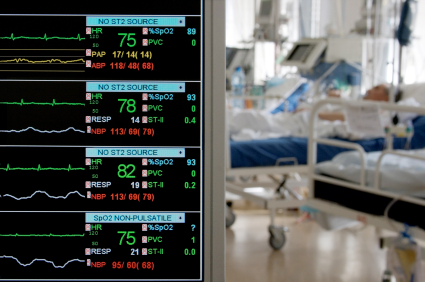Why Independent Healthcare Advocacy?
Independent healthcare advocates fill the healthcare quality gap…
Healthcare Trends
The United States leads the world not only in healthcare advances and innovations but also in healthcare expenditures. Time Magazine (November 2008) reported:

- Total healthcare spending to be 16% of the nation’s Gross Domestic Product (GDP), an equivalent to a total healthcare spending of $7,026 per person, per year.
- Healthcare spending may reach a staggering 1/5 (20%) of the entire US economy by the year 2017.
- Per person healthcare spending will nearly double from $7,026 to $13,101 per year by 2017.
While healthcare spending intensifies, concerns about healthcare quality and safety are increasing. As healthcare reform is being debated, the complexity of the US healthcare system is becoming more profound. Many Americans are overwhelmed and desperate for help in navigating today’s medical environment. As the aging population increases, so will the number of the elderly being bewildered with the healthcare bureaucracy. Families living far apart may require private advocacy professionals to manage the care of distant relatives.
The fifth annual patient Safety in American Hospitals Study released in April, 2008, showed:
- From 2004-2006, patient safety errors resulted in 238,337 potentially preventable deaths of US Medicare patients in hospitals.
- The cost to the Medicare program was $8.8 billion.
The Centers for Disease Control (CDC) (2005) reported:
- There were 133 million Americans with at least one longterm illness
- Longterm illness accounts for 70% of all deaths and these account for 75% of $2 trillion annual medical costs.
A study of 84,730 patients who had undergone inpatient general and vascular surgery from 2005 through 2007, using data from the American College of Surgeons (ACS) National Surgical Quality Improvement Program (SCIP) (Ghaferi, Birkmeyer, and Dimick, 2009), found that reducing surgical complications and the accurate and timely management of complications as soon as they occur, may help in decreasing deaths from surgical complications.
The Rand Institute (2003) reported that overall, adults received only approximately half of the recommended levels of care for any illness. Elizabeth A. McGlynn, PhD, Associate Director of RAND Health, asserts that there is a tremendous gap between what treatments are known to work and what treatments patients are actually getting. Therefore, she further asserts, “everyone in this country is at risk for poor care.”
The Commonwealth Fund’s State Scorecard on Health System Performance (2009) paints an overall picture of the nation’s health care systems under stress. Its report highlights the “challenges posed by rising costs of care and poor care coordination”. Its long list includes:
- At least $5 billion would be saved from avoiding preventable hospitalizations and readmissions for chronically ill or frail elderly nursing home patients.
- Nearly 78,000 fewer adults and children would die prematurely (before age 75) each year from conditions amenable to health care.
- States with the highest readmission rates also tended to have the highest costs of care overall.
Previous legislative reforms to curb healthcare waste and fraud were successful. However, along with regulatory demands and the absence of efficient electronic medical record systems, is an increasing burden of documentation, record-keeping, and reporting.
Casalino, Nicholson, Gans, et al (2009) estimated:
- Physicians spend an average of 142 hours per year interacting with health plans.
- Estimated annual cost of above = $70,000 per physician.
Hendrich, Chow, Skierczynski, and Lu (2008) found:
- Thirty five per cent of nurses’ time in medical and surgical units was spent on documentation, at an estimated annual cost of more than $50 billion.
- Money is also wasted in insurance administration and in efforts to comply with regulations promulgated by multiple agencies with overlapping responsibilities.
Effective care coordination is important. More time spent away from hands-on care, assessment, and patient monitoring, potentially could mean more errors of commission and omission, further jeopardizing the patients’ safety and recovery.
Navigating the healthcare maze could mean the difference between wellness and survival, or lifelong disability if not death, from preventable medical errors. Independent healthcare advocates are emerging and are recognized as means to fill the healthcare quality gap.

